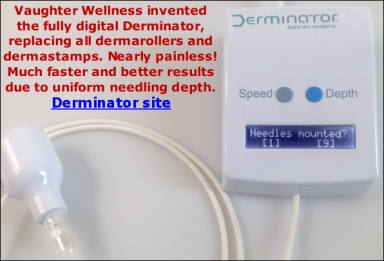Pickart commented on this thread:
Who is the "chemist"? Does he have a real name? Did he go to a real school? Has he published any papers on copper peptide chemistry? If he is that confident about his statements he certainly can reveal his name and background. He then can come to Seattle and explain is his ideas in a court of law.
I have a BA degree in chemistry and mathematics from the University of Minnesota and a PhD in Biochemistry from the University of California at San Francisco.
I seriously doubt this "chemist" is real. Copper peptides are prepared by a very simple procedure. A copper salt is dissolved in water. An adequate amount of peptides is added to the solution to bind the copper ions. The pH of the mixture is raised to pH 7 and the copper peptides are formed. Copper ions cannot stay in solution as the pH is raised. If there are no peptides to bind the copper ion, then the copper ions form copper hydroxide which precipitates from the solution. The binding affinity of small peptides for copper 2+ ion is about 10exp(+9). This means that for each billion molecules of copper-peptide, there is 1 free copper ion.
A grade school student, with proper direction, could make copper peptides in about 10 minutes.
........................................
The safety tests on the 2nd generation copper peptides were published.
In vivo nickel contact dermatitis: human model for topical therapeutics. Zhai, Chang, Singh, and Maibach (University of California, San Francisco, USA) Contact Dermatitis Vol. 40, pp. 205-208, 1999
Stripped skin model to predict irritation potential of topical agents in vivo in man. Zhai, Poblete, and Maibach (University of California, San Francisco, USA) International Journal of Dermatology, Volume 37, pages 386-389, 1998
Sodium lauryl sulfate damaged skin in vivo in man: a water barrier repair model. Zhai, Leow, and Maibach (University of California, San Francisco, USA) Skin Research and Technology, Volume 4, pages 24-27, 1998
Human barrier recovery after acute acetone perturbation: an irritant dermatitis model. Zhai, Leow, and Maibach (University of California, San Francisco, USA) Clinical and Experimental Dermatology, Volume 23, pages 11-13, 1998
Howard Maibach is considered the top expert on the safety of skin products in the world and has published about 2,400 papers and books.
......................
Further safe tests on second generation copper peptides were performed at the Shanghai Medical University, a top medical school in China, and the testing facility of the Shanghai Municipal Government. The 2nd generation copper peptides were found to be non-toxic, non-carcinogenic, non-poisonous, and non-allergic.
...................
The methods of making such peptides are detailed in:
Pickart US Patent 5,382,431 Tissue protective and regenerative compositions US Patent 5,554,375 Tissue protective and regenerative compositions US Patent 5,698,184 Compositions and methods for skin tanning and protection US Patent 5,888,522 Tissue protective and regenerative compositions.
The basic method of making copper peptides is also in:
Tripeptide in human serum which prolongs survival of normal liver cells and stimulates growth in neoplastic liver. Pickart and Thaler (University of California, San Francisco, USA) Nature New Biol 1973 May 16;243(124):85-7
Growth modulating tripeptide (glycylhistidyllysine): association with copper and iron in plasma, and stimulation of adhesiveness and growth of hepatoma cells in culture by tripeptide-metal ion complexes. Pickart and Thaler (University of California, San Francisco, USA) J Cell Physiol 1980, 102(2):129-39
Growth modulating plasma tripeptide may function by facilitating copper uptake into cells. Pickart, Freedman, Loker, Peisach, Perkins, Stenkamp and Weinstein Nature 1980, 288, 715-7
...............
In over 10 years of clients using our 2nd generation copper peptides, we have had zero claims for damage on our liability insurance.





